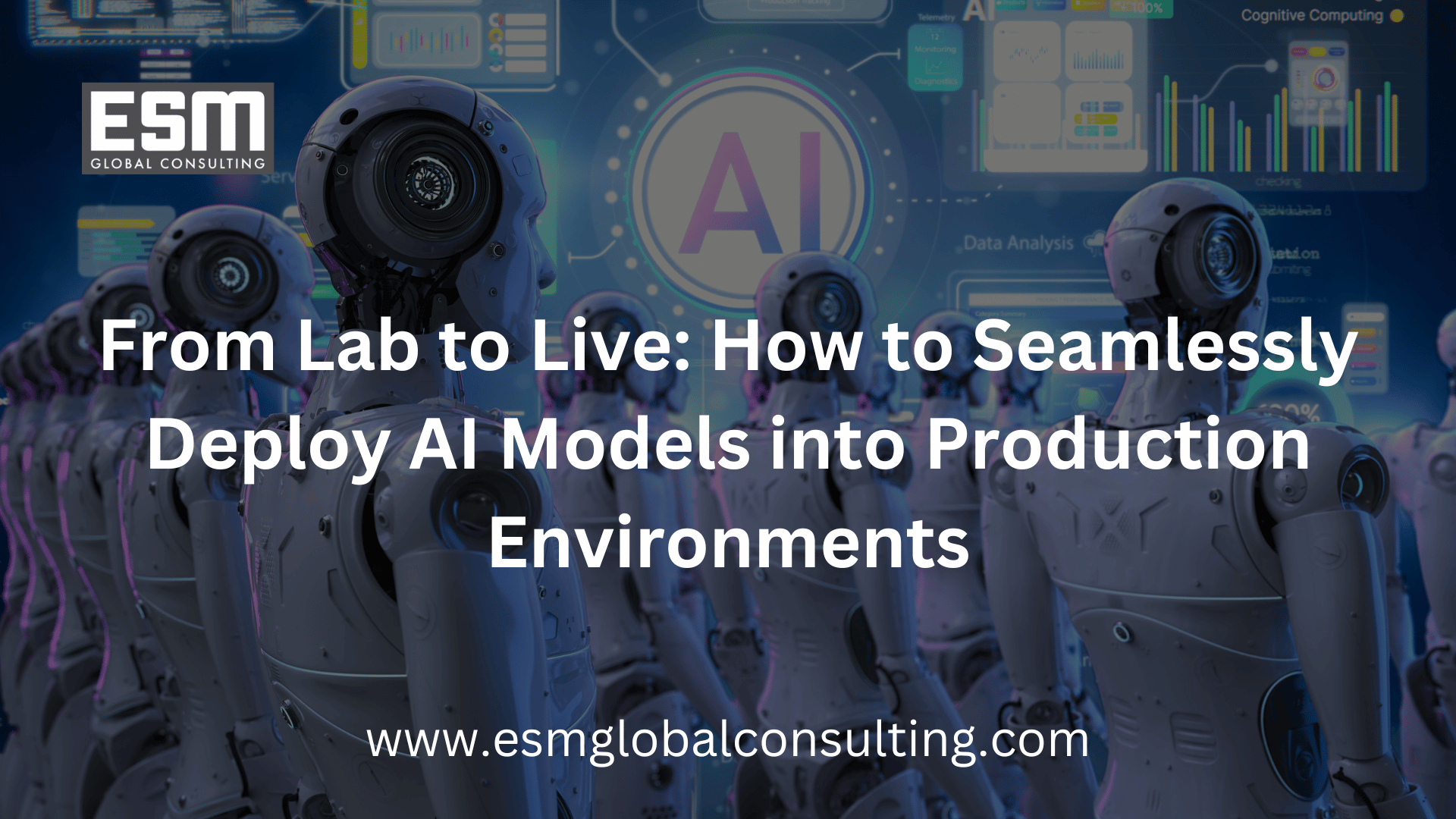From Lab to Live: How to Seamlessly Deploy AI Models into Production Environments
Building a powerful AI model in the lab is only half the battle. The real challenge begins when it’s time to deploy that model into a live business environment, where uptime, scalability, and reliability are non-negotiable.
Many organizations struggle at this critical handoff point. Models that perform perfectly in Jupyter notebooks often crumble in real-world scenarios, bogged down by integration issues, security gaps, or missing monitoring systems.
At ESM Global Consulting, we bridge this gap, transforming experimental prototypes into production-ready AI systems that deliver consistent value at scale.
Step 1: Prepare Your Infrastructure for AI Workloads
Before deploying, your environment must be production-grade:
Containerization with Docker or Podman ensures that your model behaves consistently across environments.
Kubernetes or cloud-based orchestration tools automate scaling, resilience, and versioning.
GPU or TPU support guarantees computational efficiency for deep learning models.
An unprepared infrastructure can lead to model downtime, version mismatches, and high maintenance costs. Treat your environment setup as your AI foundation—not an afterthought.
Step 2: Automate with MLOps
MLOps brings DevOps principles to AI by automating deployment, testing, and monitoring. Key components include:
Version Control (Git, DVC) for models and datasets.
CI/CD Pipelines (Jenkins, GitHub Actions) for automated retraining and deployment.
Feature Stores for consistent data availability across environments.
When done right, MLOps shortens deployment cycles from months to days, enabling faster iteration and continuous improvement.
Step 3: Choose the Right Model Serving Strategy
Depending on your business needs, you can serve your model through:
Batch Inference: Ideal for periodic predictions on large datasets.
Online/Real-Time Serving: Perfect for dynamic systems like recommendation engines or fraud detection.
Edge Deployment: Best for low-latency applications where decisions happen on-device (e.g., IoT, manufacturing).
ESM helps enterprises match the right serving architecture with their operational realities—ensuring performance without overspending on compute resources.
Step 4: Implement Continuous Monitoring
Deployment is not the end—it’s the beginning of a feedback loop. Models degrade over time due to data drift, concept drift, or external factors.
That’s why continuous monitoring is essential to track:
Performance Metrics: Accuracy, latency, precision, recall.
Data Quality: Shifts in input patterns.
Compliance and Bias: Ethical AI and regulatory standards.
With the right monitoring setup, you can catch performance dips early and trigger automated retraining pipelines—keeping your AI relevant and compliant.
Step 5: Secure and Govern Your AI
Security in AI isn’t optional. Threats like model inversion, data poisoning, or adversarial attacks can compromise systems and expose sensitive data.
A robust deployment strategy includes:
Encryption of model artifacts
Access control for APIs and endpoints
Audit trails for regulatory compliance
ESM integrates AI security governance frameworks into every deployment—so performance doesn’t come at the cost of protection.
The ESM Approach: From Prototype to Production-Grade AI
At ESM Global Consulting, we specialize in end-to-end AI deployment solutions—covering infrastructure design, MLOps automation, model serving, and continuous monitoring.
Our approach ensures:
Faster time to production
24/7 performance visibility
Compliance with global AI standards
Long-term scalability and cost efficiency
We help you turn AI innovation into measurable business value—without the growing pains.
Conclusion: The True Measure of AI Success
An AI model doesn’t deliver value until it’s operational. Moving from lab to live is where the science meets strategy, and where expert guidance makes the difference.
With the right deployment framework, your AI can evolve, adapt, and perform reliably, long after its first launch.


